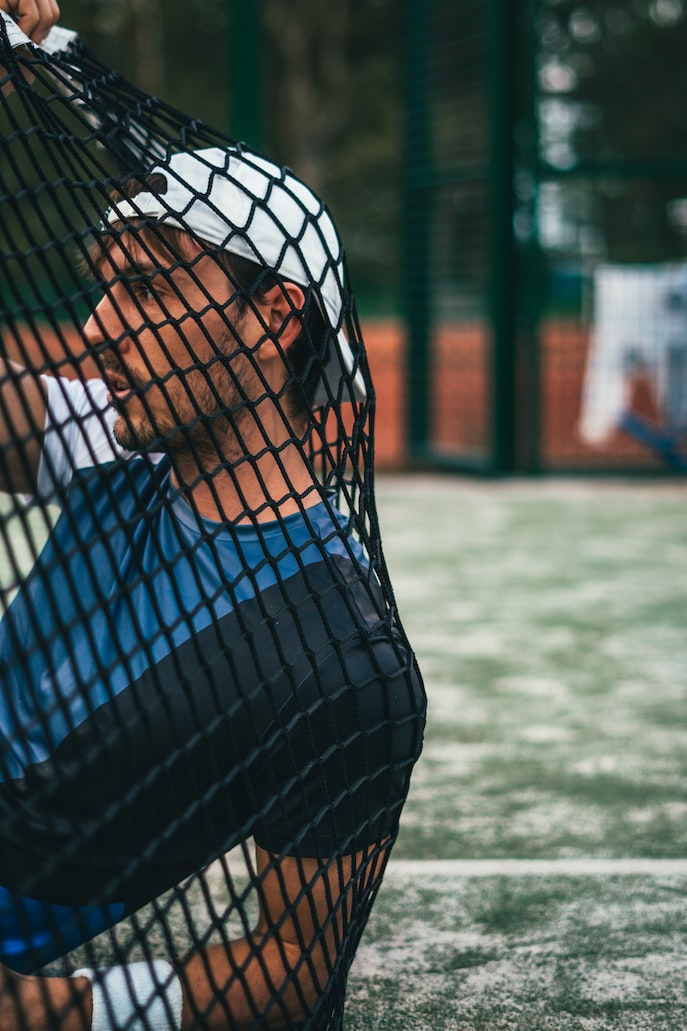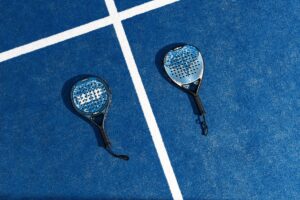Padel 101: The Beginner’s Guide to Equipment, Rules, and Strategy
3 min read
Padel 101: The Beginner’s Guide to Equipment, Rules, and Strategy
The Introduction: What is Padel?
Welcome to the beginner’s guide to padel, the exciting and fast-growing sport that combines elements of tennis and squash. Padel is played in doubles on an enclosed court smaller than a tennis court but with glass walls and wire mesh fencing. The sport originated in Mexico but has gained immense popularity worldwide due to its accessibility, simplicity, and thrilling gameplay.
The Equipment: What You Need to Get Started
Before diving into the world of padel, it’s essential to have the proper equipment. Here are the essentials:
Racket
Choosing the right padel racket is crucial for beginners. Look for a racket that feels comfortable in your hand and offers a good balance between power and control. Opt for a racket with a larger sweet spot, as it will be more forgiving when you don’t hit the ball perfectly.
Balls
Padel balls are slightly smaller and less pressurized than tennis balls, allowing for a slower game and longer rallies. Invest in a set of padel balls specifically designed for the sport to ensure an optimal playing experience.
Footwear
Padel is an intense sport that requires quick movements and agility. Therefore, it’s essential to wear appropriate footwear that provides excellent traction and stability. Look for padel-specific shoes that offer lateral support and cushioning to protect your feet during intense matches.
The Rules: Unveiling the Padel Code
Now that you have your gear ready, it’s time to understand the rules of the game. Here’s a brief overview:
Scoring
Padel follows a similar scoring system to tennis, with games played to six, and the first team to win two sets emerges victorious. However, the key difference lies in the scoring terminology. Instead of using “love” and “fifteen,” padel uses numbers one through four consecutively.
Serve
Like in tennis, the ball must be served diagonally across the net. The server must stand behind the baseline and hit the ball underhand. The ball must bounce once on the server’s side and once on the receiver’s side before any player can hit it in the air.
Let Rule
If during the serve, the ball hits the net and lands in the correct diagonal box, it’s considered a “let,” and the server gets another chance to serve without incurring any penalties.
The “No-Volley Zone”
Padel introduces a unique “no-volley zone,” also known as the “kitchen.” This area is a seven-meter zone in front of the net where players are not allowed to hit the ball in the air. Players must let the ball bounce before returning it if they are inside the no-volley zone.
The Strategy: Mastering the Padel Game
Now that you’re familiar with the basics, let’s dive into some winning strategies:
Communication and Teamwork
Constant communication and teamwork are vital in padel. Discuss tactics, position yourselves wisely on the court, and always support your partner. A strong partnership can make all the difference when it comes to winning matches.
Placement Over Power
In padel, precision is key. Focus on placing shots strategically rather than simply hitting the ball hard. Aim for the corners, utilize angles, and exploit weaknesses in your opponents’ positioning. Remember, a well-placed shot can be more effective than a powerful one.
Mixing Up Shots
Vary your shots to keep your opponents off balance. Combine lobs, volleys, drives, and drop shots to break their rhythm and force errors. By keeping your opponents guessing, you gain a significant advantage in dictating the flow of the game.
Conclusion
Congratulations, you’ve completed your crash course in padel! Armed with the right equipment, understanding of the rules, and some basic strategies, you’re ready to hit the court and start playing this thrilling sport. So, grab a partner, find a padel court near you, and enjoy the thrill of padel today!






